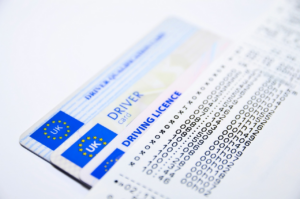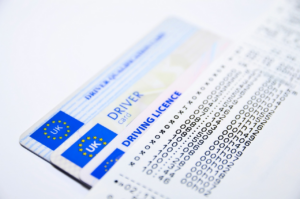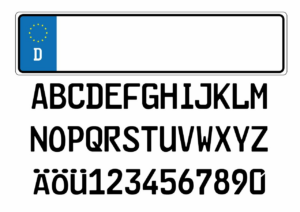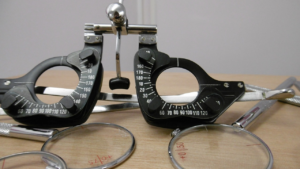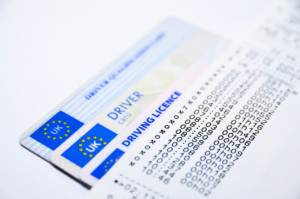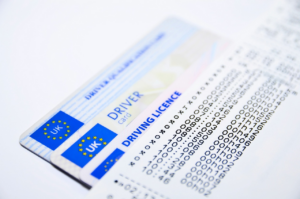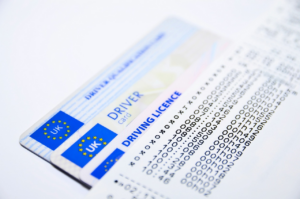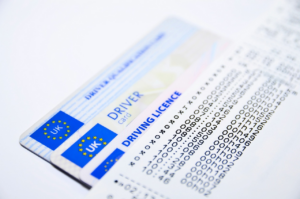Congratulations on getting behind the wheel for the first time! Driving can be an exhilarating experience, but it also comes with a great deal of responsibility. As a beginner, it’s important to understand that driving requires skill, patience, and a lot of practice.
There are a number of things you can do to ensure a safe and enjoyable driving experience, and we’re here to help you get started with 10 essential driving tips and tricks.
Whether you’re learning to drive for the first time or simply looking to brush up on your skills, these tips will help you navigate the roads with confidence. From preparing yourself and your vehicle for the drive, to mastering defensive driving techniques and handling emergencies on the road, we’ve got you covered.
So, buckle up, adjust your mirrors, and let’s get started on the road to becoming a skilled and confident driver.
Prepare Yourself and Your Vehicle for the Drive
Before hitting the road, make sure to get yourself and your vehicle ready for a smooth and safe journey. This means making sure that you’re well-rested and alert, as driving requires a lot of focus and attention. Avoid driving if you feel fatigued or sleepy, and take regular breaks to stretch your legs and refresh your mind.
Additionally, it’s important to ensure that your vehicle is in good working condition. Check the tires, brakes, lights, and fluids before setting off, and make any necessary repairs. This will not only help prevent accidents but also save you from potential breakdowns and costly repairs down the road.
Another important aspect of preparing for a drive is to plan your route and familiarize yourself with the road conditions. Use a GPS or map to map out your journey, and take note of any potential hazards or traffic congestion. This will help you avoid getting lost or stuck in traffic, which can be frustrating and time-consuming.
Remember to also pack any necessary items, such as water, snacks, and a first aid kit, in case of emergencies. By taking the time to prepare yourself and your vehicle, you can ensure a safe and enjoyable driving experience.
Know the Rules of the Road
You’ll become a confident and safe driver by familiarizing yourself with the rules of the road, so pay close attention to this section. Understanding and following these rules will not only keep you safe, but will also prevent you from getting pulled over and ticketed.
Here are three things to keep in mind:
-
Always follow the speed limit. It’s important to remember that speed limits are set for a reason, and going too fast can put yourself and others in danger. Be aware of the speed limit signs and adjust your driving accordingly.
-
Use your turn signals. Signaling your intentions is not only courteous, it’s also required by law. Use your turn signals when changing lanes, merging, and making turns.
-
Come to a complete stop at stop signs and red lights. Rolling through a stop sign or running a red light is not only dangerous, it’s also illegal. Make sure to come to a complete stop before proceeding, even if you think it’s safe to go.
By following these rules, you’ll be able to navigate the roads with confidence and safety. Remember to always be alert and aware of your surroundings, and never hesitate to ask for help if you’re unsure of something. Safe driving!
Start Slow and Stay Focused
When it comes to starting out as a new driver, it’s important to remember to start slow and stay focused. Gradually accelerate and brake to get a feel for the car and your surroundings.
Keep your hands on the wheel at all times and avoid any unnecessary distractions that may take your attention away from the road.
These simple but essential tips will help you build confidence and become a safer driver on the road.
Gradually Accelerate and Brake
It’s important to smoothly accelerate and brake to ensure a safe and comfortable driving experience. Sudden jerks and jolts can not only make the passengers feel uneasy, but can also lead to accidents on the road.
Here are some tips to help you gradually accelerate and brake:
- Use the gas pedal gently and gradually increase pressure to accelerate smoothly.
- Avoid sudden stops by anticipating traffic and slowing down in advance.
- When braking, apply the pressure gradually and evenly, instead of slamming on the brake pedal.
- Use the handbrake only when necessary, such as when parking on a hill or in an emergency situation.
Remember, driving is not a race, and taking it slow is always better than taking unnecessary risks. By following these tips, you can ensure a comfortable and safe journey for you and your passengers.
Keep Your Hands on the Wheel
Hey, have you ever found yourself driving with one hand on the wheel and the other on your phone or coffee cup? Well, it’s time to break that habit and keep both hands on the wheel for a safer ride.
Keeping both hands on the wheel allows you to have better control of your vehicle and react quickly to any unexpected situations on the road. It may seem like a small detail, but it can make a big difference in preventing accidents.
Moreover, keeping both hands on the wheel can also help reduce fatigue while driving. When you have one hand on the wheel, your body tends to lean towards that side, causing strain on your muscles. This can result in discomfort and exhaustion, making it difficult to concentrate on the road.
By keeping both hands on the wheel, your body stays balanced and relaxed, allowing you to focus on the task at hand and arrive at your destination safely.
Avoid Distractions
Avoiding distractions while behind the wheel can significantly reduce the likelihood of accidents occurring, making it imperative to remain focused and attentive at all times. Here are some tips to help you avoid distractions while driving:
-
Keep your phone out of reach and out of sight. If you need to use your phone for navigation, consider mounting it on the dashboard so you can keep your eyes on the road.
-
Avoid eating or drinking while driving. Not only can it be distracting, but it can also increase your risk of spilling something and causing an accident.
-
Limit the number of passengers in your car, especially if you’re a new driver. Having too many people in the car can be distracting, and it can be difficult to focus on the road with constant conversation and noise.
Remember, distractions can come in many forms, such as adjusting the radio, reaching for something in the backseat, or daydreaming. By staying focused and minimizing distractions, you can help ensure a safe and enjoyable driving experience for everyone on the road.
Practice Defensive Driving
When behind the wheel, it’s crucial to stay alert and anticipate potential hazards on the road to ensure your safety and the safety of others around you. This is why practicing defensive driving is an essential skill for beginner drivers.
Defensive driving involves being aware of your surroundings, predicting other drivers’ actions, and taking appropriate measures to avoid accidents. To practice defensive driving, always be aware of what’s happening around you. Check your mirrors frequently, and keep an eye out for potential hazards, such as pedestrians, bicyclists, or other vehicles.
Predict other drivers’ actions by maintaining a safe distance from the car in front of you and watching for signs of sudden lane changes or turns. Finally, take appropriate measures to avoid accidents, such as slowing down or changing lanes. By practicing defensive driving, you can reduce the risk of accidents and ensure your safety and the safety of others on the road.
Navigate Different Driving Scenarios
Now that you’ve got a good understanding of defensive driving, it’s time to learn how to navigate different driving scenarios.
As a beginner driver, you’ll encounter a wide range of driving situations, from merging onto the freeway to navigating through heavy traffic. It’s important to have the knowledge and skills to handle each scenario with confidence and ease.
One of the key tips for navigating different driving scenarios is to always stay calm and focused. Panicking or becoming overwhelmed can lead to poor decision-making and potentially dangerous situations. Take deep breaths and remember the defensive driving techniques you’ve learned to help you stay safe on the road.
Additionally, make sure to stay alert and aware of your surroundings, especially in unfamiliar areas. Use your GPS or maps to plan your route ahead of time and always be prepared to adapt to changing road conditions.
By following these tips, you can navigate any driving scenario with ease and confidence.
Handle Emergencies
When you’re on the road, emergencies can happen at any time. Knowing how to handle them can make all the difference.
In this subtopic, we’ll discuss three key emergency scenarios: dealing with a flat tire, responding to brake failure, and handling skids. By understanding how to react in these situations, you can help keep yourself and others safe on the road.
Dealing with Flat Tires
You never know when you might encounter a flat tire, but with these quick fixes, you’ll be back on the road in no time.
The first thing you should do is safely pull over to the side of the road and turn on your hazard lights. Make sure to park on a level surface and engage your parking brake.
Next, locate your spare tire, jack, and lug wrench. These tools should always be in your car, so make sure to check them periodically.
Once you have the necessary tools, use the lug wrench to loosen the lug nuts on the flat tire. Then, use the jack to lift the car and remove the flat tire.
Replace it with the spare tire and hand tighten the lug nuts. Lower the car and use the lug wrench to tighten the nuts as much as possible.
Finally, check the tire pressure on the spare tire and make sure it’s safe to drive on.
With these simple steps, you can quickly and easily deal with a flat tire and get back on the road.
Responding to Brake Failure
If your car’s brakes fail, it can be a terrifying experience, but there are steps you can take to minimize the damage and keep yourself and others safe.
The first thing you should do is stay calm and try to remain focused. Panicking will only make the situation worse and increase the risk of an accident.
Next, you should immediately shift your car into a lower gear to help slow it down. If you have a manual transmission, downshift to a lower gear; if you have an automatic transmission, shift into the lowest gear possible. This will help slow your car down and give you more control over it.
Try to steer your car to the side of the road and use your emergency brake to bring it to a stop. Remember to use your horn to alert other drivers of your situation.
Once you have stopped, turn your hazard lights on to inform other drivers that your car is not moving.
Handling Skids
Handling skids can be scary, but staying calm and focused can help you regain control of your car. When encountering a skid, the first step is to take your foot off the gas pedal and avoid hitting the brakes. Hitting the brakes will only make the situation worse, causing your car to spin out of control. Instead, turn your steering wheel in the direction you want your car to go and wait for your car to regain traction.
To handle skids better, keep these tips in mind:
- Make sure your tires are properly inflated and have enough tread depth.
- Slow down when driving on wet or icy roads to avoid skids.
- Avoid sudden movements or sharp turns that can cause your car to skid.
- Practice skid control techniques in a safe and controlled environment.
- Always wear your seatbelt to protect yourself in case of an accident.
By following these tips, you can improve your ability to handle skids and avoid accidents on the road. Remember to stay calm and focused, and never panic when faced with a skid. With practice and experience, you can become a more confident and skilled driver.
Maintain Your Vehicle
Make sure to keep up with regular maintenance on your car to ensure safe and reliable driving. This means checking your oil and other fluids regularly, getting your tires rotated and balanced, and having your brakes inspected and serviced when necessary.
It may also involve getting your car serviced by a professional mechanic on a regular basis to keep everything running smoothly. Regular maintenance can help you avoid breakdowns and other issues while you’re on the road.
It can also help you catch potential problems early, before they turn into costly repairs. By taking good care of your car, you can ensure that it’s always in good working order, which can give you peace of mind and help you stay safe on the road.
So make sure to stay on top of maintenance, and you’ll be able to enjoy reliable and hassle-free driving for years to come.
Build Confidence Over Time
As you gain more experience behind the wheel, you’ll gradually start to feel more confident and at ease on the road, like a seasoned driver navigating through traffic with ease.
This is why it’s important to build your driving skills over time and not rush into difficult driving situations right away. Start by practicing in a quiet parking lot or residential street before moving onto busier areas. As you become more comfortable, gradually increase the difficulty of the driving situations you tackle.
Remember that driving is a skill that takes time and practice to master. Don’t be hard on yourself if you make mistakes or feel nervous at first.
With time, you’ll gain the confidence you need to navigate the roads with ease. Just keep practicing and taking on new challenges, and before you know it, you’ll be a confident and skilled driver.
Frequently Asked Questions
How can I avoid getting lost while driving in a new area?
When you’re driving in a new area, it’s easy to get lost and feel overwhelmed. However, there are a few things you can do to avoid this.
First, before you start your journey, take some time to familiarize yourself with the route. Use a GPS or map to get a general idea of where you’re going and the major landmarks along the way.
Second, pay attention to road signs and street names as you drive. This will help you keep track of where you are and where you need to turn.
Finally, don’t be afraid to ask for directions if you need them. Most people are happy to help, especially if you’re polite and respectful.
By following these tips, you can stay on track and arrive at your destination safely and efficiently.
What should I do if I get a flat tire while driving?
If you get a flat tire while driving, the most important thing to do is to remain calm and pull over to a safe location as soon as possible.
Turn on your hazard lights and apply the handbrake.
Make sure that your car is on a level surface and away from the traffic.
Once you have stopped, assess the damage and check if you have a spare tire, a tire jack, and a lug wrench.
If you have all the necessary equipment, then you can change the tire yourself. However, if you feel unsure or uncomfortable, it’s better to call a professional mechanic for assistance.
Remember to always drive with caution and check your tire pressure regularly to avoid flat tires.
How do I handle aggressive drivers on the road?
When encountering an aggressive driver on the road, it’s important to remain calm and avoid engaging with them.
Do not make eye contact or gesture towards them, as this may only escalate the situation.
Instead, keep a safe distance and allow them to pass if possible.
If the aggressive behavior continues, find a safe place to pull over and call the authorities.
Remember, your safety and the safety of others on the road is paramount.
It’s also important to regularly practice defensive driving techniques to avoid potentially dangerous situations on the road.
Is it necessary to wear seat belts while driving?
When it comes to driving, your safety should always be your top priority. One of the most important things you can do to protect yourself while on the road is to wear your seat belt. Not only is it required by law in most states, but it can also save your life in the event of an accident.
Seat belts work by restraining your body and preventing you from being thrown forward in a crash. This can help to minimize the impact of a collision and reduce the risk of serious injury. So, whether you’re a beginner or an experienced driver, make sure to always buckle up before hitting the road.
What should I do if I accidentally hit a pedestrian or another vehicle?
If you accidentally hit a pedestrian or another vehicle while driving, the first thing you need to do is stop your car as quickly and safely as possible. Make sure to turn on your hazard lights to alert other drivers on the road.
Check yourself and your passengers for injuries, and then check on the other party involved. Call for emergency services if necessary and provide them with as much information as possible.
Stay calm and try to exchange contact and insurance information with the other party. It’s important to remain at the scene until the authorities arrive and provide your account of the situation.
Remember, accidents happen, but it’s how you handle them that can make a significant difference in the outcome.
Conclusion
Congratulations on taking the first step towards becoming a confident and safe driver! Remember, driving is a skill that requires not only practice but also knowledge and awareness. By following these 10 essential driving tips and tricks, you’ll be well on your way to becoming a skilled driver.
Firstly, always prepare yourself and your vehicle before hitting the road. Check your mirrors, adjust your seat, and ensure that your vehicle’s in good working condition.
Secondly, know the rules of the road and follow them at all times. This includes obeying traffic signals, speed limits, and road signs.
Thirdly, start slow and stay focused, especially when driving in unfamiliar areas. Remember to always practice defensive driving by being aware of your surroundings and anticipating potential hazards.
As you gain experience, you’ll encounter different driving scenarios such as heavy traffic, adverse weather conditions, and road construction. Always be prepared and adjust your driving accordingly.
In case of an emergency, stay calm and know how to handle the situation.
Finally, maintaining your vehicle is crucial for both your safety and the longevity of your vehicle. Keep up with regular oil changes, tire rotations, and other maintenance tasks.
With time and practice, you’ll build your confidence and become a skilled driver. Safe travels!












































